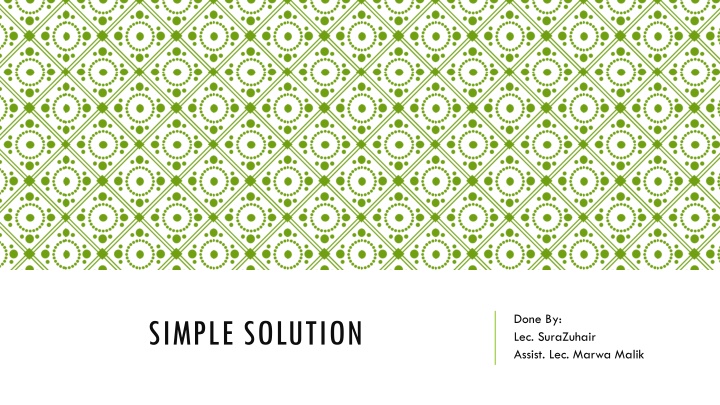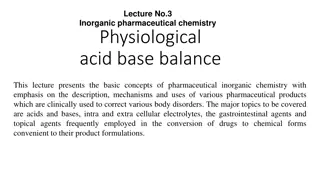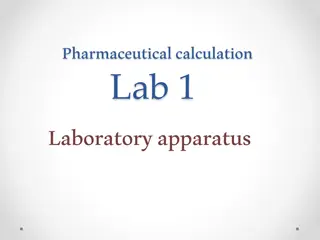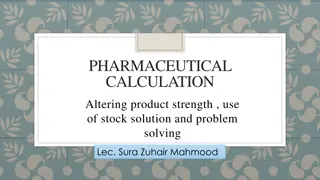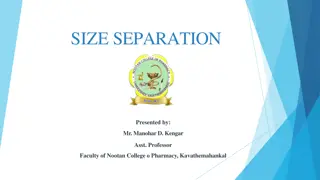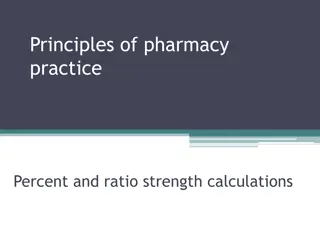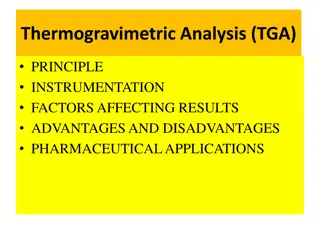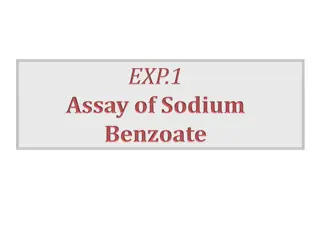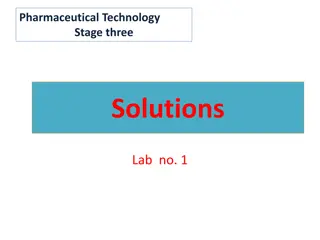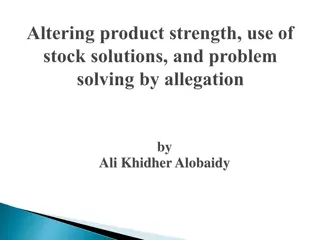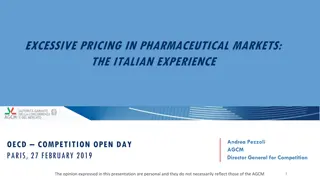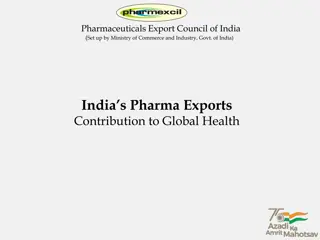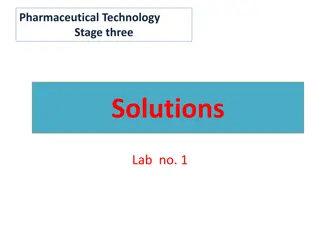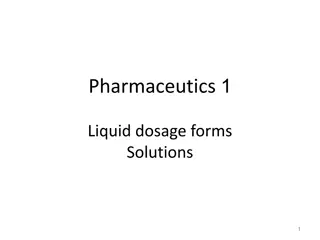Simple Solutions in Pharmaceutical Preparations
Solutions in pharmacy are crucial liquid preparations containing dissolved chemical substances in suitable solvents. Learn about types, preparation methods, and examples of simple solutions with an overview of percentages in pharmaceutical contexts.
Download Presentation

Please find below an Image/Link to download the presentation.
The content on the website is provided AS IS for your information and personal use only. It may not be sold, licensed, or shared on other websites without obtaining consent from the author.If you encounter any issues during the download, it is possible that the publisher has removed the file from their server.
You are allowed to download the files provided on this website for personal or commercial use, subject to the condition that they are used lawfully. All files are the property of their respective owners.
The content on the website is provided AS IS for your information and personal use only. It may not be sold, licensed, or shared on other websites without obtaining consent from the author.
E N D
Presentation Transcript
Done By: Lec. SuraZuhair Assist. Lec. Marwa Malik SIMPLE SOLUTION
SOLUTIONS are liquid pharmaceutical preparations. Which contain one or more soluble chemical substance dissolved in one or more suitable solvent and produce single phase system.
solute Simple solution solvent
WE HAVE TWO TYPES OF SOLUTION: Aqueous solution (solvent is water) Non-aqueous solution solvent other than water
GENERAL PROCEDURE OF PREPARATION OF SIMPLE SOLUTION 1 Weigh the solid ingredient and put it in a volumetric flask or conical flask. 2 Subtract the volume of liquid ingredient (in the formula ) from of the final volume of the prescription. 3 Dissolve the solid ingredients in the remaining amount of the vehicle. 4 Add the liquid ingredient. 5 Convert the content of conical flask into the measuring cylinder and complete the volume up to the required amount by the addition of the vehicle. 6 Transfer the content of the measuring cylinder to a wide mouth bottle and put the suitable label.
Examples Rx1 Glucose 5mg D.W. q.s. 20ml Rx 2 NaCl 0.9 gm Amaranth solution 2 ml D.W. q.s. 100ml Mitt. 50 ml
PERCENT: Means by hundred or in a hundred. It may be expressed as a ratio, represented as a common or decimal fraction. The ratio usually changes to decimal by dividing the number by 100. Example : 30% = 30/100 =0.3
PERCENTAGE means rate per hundred so 50% and percentage of 50 are equivalent expressions. There are three types of percentage: Weight/Weight: it expresses the number of grams of the active ingredient in 100 gram of solution. Weight/Volume: it expresses the number of grams of active ingredient in 100 milliliter of solution. Volume/Volume: it expresses the number of millilitre of active ingredient in 100ml of solution.
Examples Rx Glucose 10% NaCl 3% KCl 2% D.W. q.s. 30ml
Procedure Weigh 3gm of glucose and 0.9gm of NaCl and 0.6 of KCl by using balance then put it in a conical flask or volumetric flask. Dissolve the active ingredient in 22.5ml of D.W. Convert the content of the conical flask into a measuring cylinder and complete the volume to 30ml by D.W. Transfer the content of the measuring cylinder into wide mouth bottle and put a suitable label.
How many grams of glucose required to prepare 200ml of 10% solution? In certain preparation 40ml of glycerin was used to prepare 250ml solution. What is the % v/v of glycerin in this solution?
How many grams of glycerin should be used to prepare 250g of 5% w/w solution
